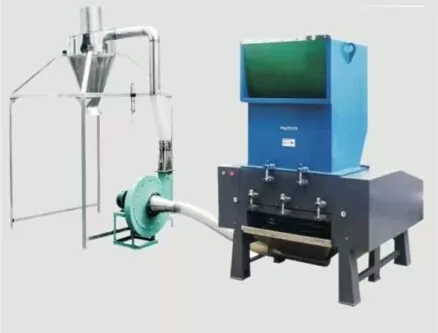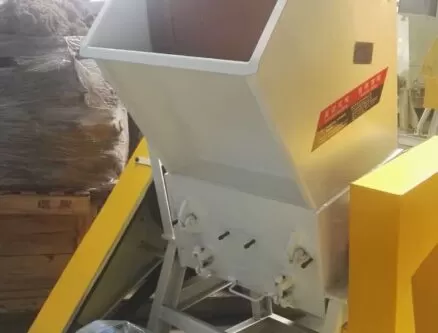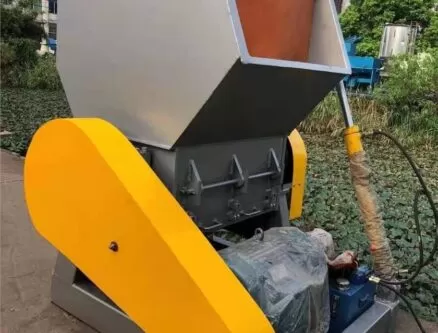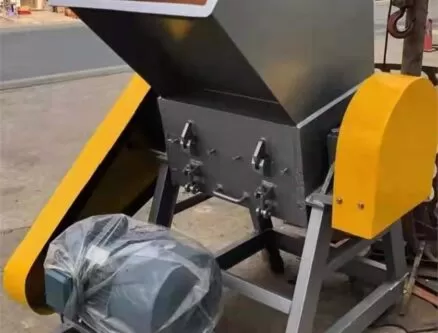Walk through any modern city and you’ll see it — the overflowing bins, the wind-tossed bags, the bottles sitting stubbornly in the gutter. Plastic waste isn’t just ugly; it’s a stubborn health hazard. Unlike food scraps or paper, it doesn’t quietly decompose. It hangs around, sometimes for centuries, leaching into soil and waterways.
And the problem is growing. According to the Global Urban Waste Outlook 2024, cities generate over 350 million tons of plastic waste annually — and less than 20% is recycled effectively. That’s where technology comes in. And me? I’ve spent years as CEO of Amige, obsessed with one thing: how to literally crush this problem.
Plastic crushing technology plays a critical role in improving urban sanitation. It’s not just about breaking stuff. It’s about creating a system that turns bulky, dirty, low-value waste into a clean, manageable, and profitable resource. By crushing plastics into uniform particles, we make them easier to clean, sort, and reuse. Cities using efficient crushers have boosted recycling rates by more than 30% according to the Urban Solid Waste Efficiency Report.
It may sound like a mechanical engineer’s dream project, but in practice, it’s the sanitation department’s secret weapon — a game-changer for waste management.

Why is crushing the first step in plastic recycling?
Here’s a truth I’ve learned in the field: you can’t manage what you can’t move. Large, intact plastic waste is a nightmare for transport and storage. A single 20-liter bucket takes up the same space as hundreds of crushed flakes — and costs more to haul.
A crusher changes that instantly. By breaking down plastic into flakes or pellets, you can reduce volume by up to 70%, according to the Urban Waste Transport Energy Study. That means more waste per truckload, fewer trips, and lower fuel costs — a direct win for both city budgets and carbon emissions.
I’ve personally seen city fleets cut weekly transport runs in half after installing crushing stations at transfer hubs. The math is simple: less air in the load, more actual material moved.
How does crushing improve cleaning efficiency?
If crushing is the first step, cleaning is the most underappreciated one. Dirty plastics — coated with food, oil, or soil — cause headaches for recycling plants. Contamination lowers resale value, limits processing options, and sometimes makes batches unusable.
Crushing solves that by exposing more surface area. Smaller pieces allow wash water and detergents to reach every crevice, which speeds up cleaning and reduces water usage. The Plastic Recycling Wash Optimization Study shows that crushed plastics require up to 40% less washing time compared to whole items.
And let me tell you — watching a batch of sticky soda bottles transform into crystal-clear PET flakes never gets old. It’s like seeing a junkyard turn into a jewelry shop.

What’s inside a high-quality crusher?
Not all crushers are created equal. A low-grade machine might struggle with thick-walled plastics, jam frequently, or wear out in months. A high-quality crusher, on the other hand, is built to chew through the toughest loads without breaking a sweat.
Key features include:
- Hardened, wear-resistant blades – Crucial for longevity and efficiency.
- High-torque, energy-efficient motors – To handle large loads without stalling.
- Intelligent overload protection – Prevents damage when unexpected materials enter.
- Adjustable screen sizes – To control flake size for specific recycling needs.
At Amige, we’ve engineered blades that last 25% longer than the industry average. That means more uptime, less maintenance, and a better ROI for city sanitation departments.
How crushing reduces landfill use and incineration dependency
Cities are running out of landfill space, and incinerators come with their own environmental baggage — emissions, ash disposal, and public resistance.
By making plastics easier to clean and process, crushing technology diverts significant volumes away from landfills and incinerators. The Urban Waste Reduction Report shows that cities using crushers at sorting facilities cut landfill-bound plastic by 45% and greenhouse gas emissions by 12%.
Think of it as a pressure valve for the waste system: more plastics recycled means less waste piling up elsewhere.
Integrating crushing into the waste sorting ecosystem
A crusher doesn’t operate in isolation. For maximum efficiency, it needs to be part of a coordinated waste management system — ideally starting with source separation at homes and businesses.
Mixed waste damages blades, slows operations, and lowers the resale value of recycled plastics. In our projects, we’ve seen the “source sorting + central crushing” model boost plastic reuse rates by 38%, as detailed in the Waste Sorting and Resource Utilization White Paper.
In practice, this means citizens sort their waste into categories, trucks collect pre-sorted loads, and crushers handle the plastics in dedicated facilities. The result? Cleaner input, smoother processing, higher profits.

Case study: How City X transformed its recycling rates
Let me give you a real-world example (with names changed for confidentiality). City X, population 5 million, struggled with low recycling rates — just 12% of collected plastics were actually reused. The rest went to landfills or incinerators.
We installed a network of industrial crushers at key transfer stations, trained staff on maintenance, and integrated the machines into the city’s waste-sorting workflow. Within 18 months, recycling rates jumped to 35%. Transport costs dropped 22%, and landfill use for plastics fell by almost half.
The mayor called it “the most cost-effective environmental upgrade we’ve ever made.” I call it proof that technology, when applied smartly, pays for itself.
Will crushing technology become smarter?
We’re already seeing it. Future crushers will do more than just cut. Using AI, they’ll identify polymer types, adjust motor speed, change blade angles, and even predict when maintenance is needed — all in real time.
The Smart Waste Processing Technology Trends Report predicts that by 2030, 80% of new crushers will have AI control, remote monitoring, and predictive analytics. That means fewer breakdowns, higher throughput, and more consistent output quality.
Imagine a crusher that can scan a batch, detect a PVC contaminant, and divert it before it hits the blades — saving both time and equipment wear. That’s where we’re headed.
Overcoming challenges in urban crusher adoption
It’s not all smooth sailing. Crushers require investment, operator training, and ongoing maintenance. Some cities hesitate because they’re focused on short-term budgets instead of long-term savings.
But when you compare the cost of a crusher to the expense of extra landfill space, increased transport runs, and lost recyclable value, the math is clear. The payback period is often under three years. And after that, it’s pure savings — both in money and environmental impact.
We’ve learned to start small — one or two units in high-volume areas — and expand once results are visible. That reduces political risk and builds public trust.

Conclusion
Plastic crushing technology isn’t just an industrial gadget — it’s a strategic tool for cleaner, healthier, more efficient cities. It reduces transport costs, improves cleaning, boosts recycling rates, and helps cut reliance on landfills and incinerators.
In the battle for urban sanitation, a well-placed crusher isn’t just a machine. It’s a city’s silent, tireless partner — working 24/7 to turn waste into opportunity.
